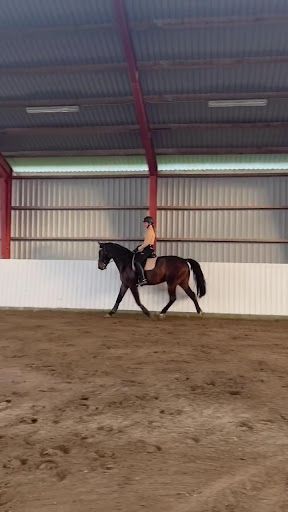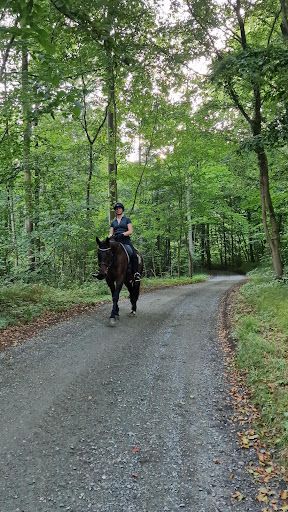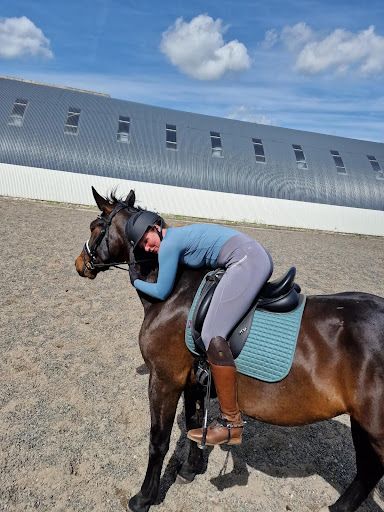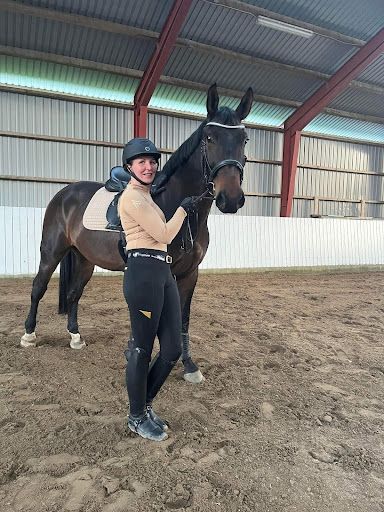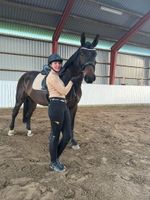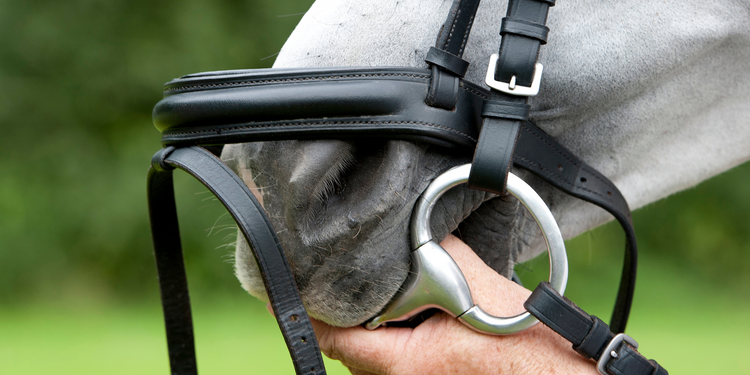It’s our responsibility to train our horses correctly.

Is modern dressage really the right way to train our horses? Is it even healthy that horses compete at Intermediare, Prix Sct. George and GP when they are only 8-9 years old?
The thought about the scores in modern dressage
I am on a mission! Being a dressage rider and looking at what we see at the highest level of dressage today, makes me wonder.
What I see, does not add up, to the scores given.
I see horses behind the vertical throughout a whole test, scoring mind blowing +80%. In detail I see horses that have massive mistakes in rhythm, the very basic of dressage education.
I see disengaged backs looking even worse than the bridge over the river Kwai. Disengaged hinds, and I could go on throughout this article with all the wrongs that I see.
But what I hear, and what the scores show, is “this is a spectacular horse”, “so much quality” and the list goes on, as does the score.
Minus 10% to a score around 70% and a bit above, what I see, are more correct riding, maybe not as “spectacular” and bombastic, but I see more correct riding and collection referred to the training scale.
My wonder in this is, that I cannot wrap my head around the training scale being “disqualified” for spectacular tending to unnatural movements.
Is this really where we are heading? And do we really want to strive for this?

High-level debut at age 8-9, is this even healthy?
I was once told that training a horse to the highest level takes around 8-9 years. Today we see horses having their debut in Intermediare or even Prix sct. George at age 8 or 9.
Looking at how the skeleton of the horse matures, this does not add up to a healthy way of training our horses, most warm blood horses have not developed fully until they are around 6 years old. And some of the last parts to complete the process are the back, neck, shoulders, jaws, and the pelvis.
Pacing a horse to reach high-level dressage inevitably interferes with the development of the skeleton.
And the timeframe does not add up, even if you start training the horse at 3 years old.
This explains why we see basic mistakes in high-level dressage, either basic steps have been skipped, or the horse is paced to a collective state, that his body is not ready to honor.
And this is speaking about a breed that matures early, we need to remember that several breeds mature even later, even at the age of 8 years old.
This must change
Talking about the direction of modern dressage versus following the training scale is of so much importance. And having the growth and development of the horse in mind, we need to change our general interpretation of what is correct both in means of the results and scores, and in means of when the horse is supposed to be ready for the work, we tell them to do.
As per now, the demands are too high be compared to the horse’s physical development.
Therefore, rider bashing is not the way to do it
The pro riders have dressage as a career, they adjust to what gives them the highest score. Of course, they must do this, this is the way they earn their money, by winning competitions, and educating horses that must be ready for the demands that are currently are set for their age.
The clients want a horse that is ready to go perform from day one. This means that sales horses often are paced to honor the demands, and to be sold at the best price possible.
For the pro riders to change, we need the associations and dressage judges to change their perspective, demands and scoring.
This does not mean that I find what the pro riders are doing is fine and okay, but we need to keep in mind, that this must be a change of overall mindset.

This I why we need to keep speaking up
We need to implement that we as amateur riders have a right to speak up on behalf of the horses.
I have been met with the attitude of arrogance towards amateur riders, because, on paper, we are not skilled enough to have an opinion.
But let us set this straight – WE ARE!
We might not be GP-riders, on paper – BUT!!! We do ride GP to, because do you know what? A pirouette is only a small circle, a piaffe is basically a trot on the spot.
So yes – we ARE GP riders, we just have not achieved all of it yet.
And we ARE ENTITLED to speak, even shout out, that this is wrong in so many levels.
Therefore, our training matter and must be correct
We are the only ones that can make a change happen, if we insist on training correctly from the training scale and with the horse’s physique in mind.
Correct training is not making everything perfect from the beginning, it is about progress. Dressage is all about us learning and training the horse to carry us on their backs in the best possible way.
It is about listening to what your horse needs to answer the questions you ask. Your absolute best trainer is your horse, he will show you what he needs, you only have to feel and listen throughout the work.
It is about believing that YOU are capable to train your horse through the steps of the training scale, from the basic to the ultimate goal. You are the mentor of your horse, and you know him best. Yes, lessons are necessary, but make sure that you chose a trainer, that works in the same theoretic system as you do.
And it is about understanding that the training scale is your tool, and every step of the training scale is implemented at any level, the only difference is the degree of each step. So, trust the training scale, and work towards progress instead of perfection.
We must stick together
As equestrians we are the only ones that can have an influence in this.
By not accepting the development of our sport becoming a show on the behalf of our horses and not backing down when we advocate the health and training of the horse.
By claiming our right to have a voice, and a knowledge equivalent to the pro riders and the associations. We must never accept the mocking tone of “little Mary and her pony knows nothing about this”. We have a right to be heard.
As equestrians we need to be supportive towards each other, stop rider bashing, giving unsolicited advice, and embrace that we all are on various stages in our journey.
We need to feel safe to post anything, not only pretty. And we need to stop believing in picture perfect because that is not the truth.
When we unite our voice becomes louder, our mandate becomes stronger. We must never be afraid to question what judges and associations think and implement, we are the voices of our horses. Let us make it count!
- Karina –
